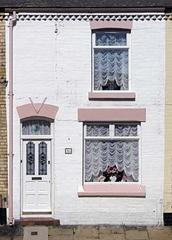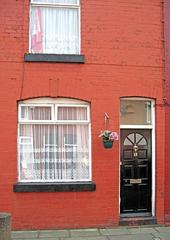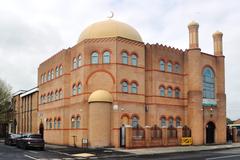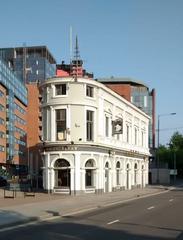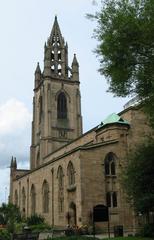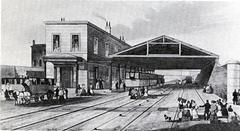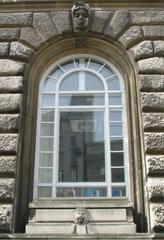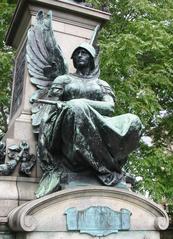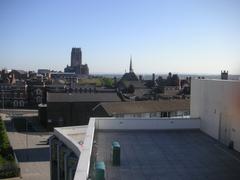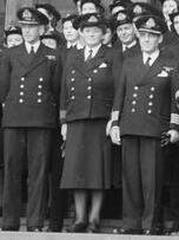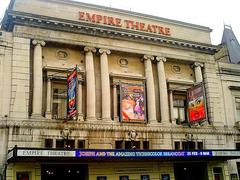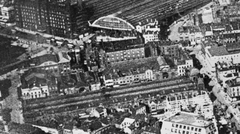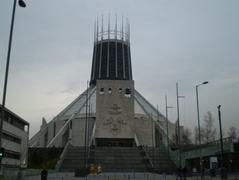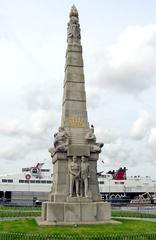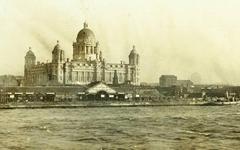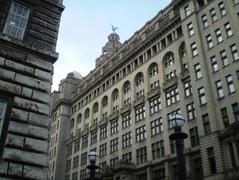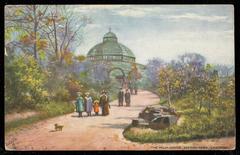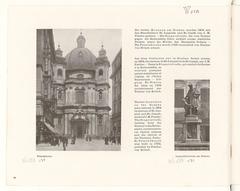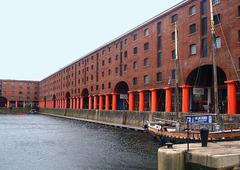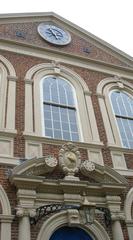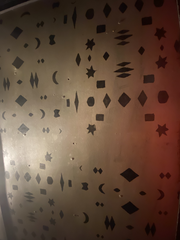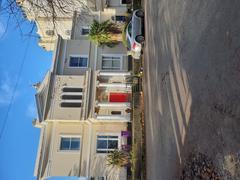
Waterloo Dock Liverpool: Visiting Hours, Tickets, and Historical Sites Guide
Date: 04/07/2025
Introduction to Waterloo Dock and Its Significance
Waterloo Dock, located on Liverpool’s River Mersey, stands as a testament to the city’s rich maritime history and ongoing urban transformation. Established in 1834 and designed by Jesse Hartley, this dock was instrumental in Liverpool’s rise as a global trading hub during the Industrial Revolution (Wikipedia; Visit Liverpool). Named to honor the Battle of Waterloo, it showcased advanced engineering with granite and sandstone construction, features that remain defining elements of the Liverpool waterfront (UNESCO).
Throughout the 19th and early 20th centuries, Waterloo Dock served as a crucial gateway for the import and export of goods such as cotton, tobacco, and grain, while also playing a role in scientific advancement with its 1843 observatory, which provided essential time signals for maritime navigation (Impressions of Liverpool; Historic Liverpool). The dock was not only a commercial powerhouse but also a focal point for migration, shaping Liverpool’s multicultural identity.
In recent years, Waterloo Dock has experienced significant regeneration, notably through the Liverpool Waters project. This initiative seeks to blend heritage conservation with new residential and commercial developments—a process that has sparked vital conversations about balancing modern growth with historical preservation (Romal Capital; Liverpool Echo; SAVE Britain’s Heritage; Save Waterloo Dock).
Today, Waterloo Dock is an accessible, year-round destination where visitors can explore Liverpool’s maritime legacy against a backdrop of both historic architecture and modern urban vibrancy (WhatsInPort; Liverpool Maritime Museum).
Contents Overview
- Introduction
- Origins and Early Development
- Technological Innovations and Maritime Significance
- Expansion and Structural Changes
- Role in Liverpool’s Maritime Economy
- Decline and Modern Regeneration
- Heritage Status and Contemporary Challenges
- 21st-Century Transformation
- Visiting Waterloo Dock: Practical Information
- Cultural Experiences and Visitor Engagement
- Visitor FAQs
- Visuals and Media
- Conclusion
- Summary and Visitor Tips
- Sources
Origins and Early Development
Waterloo Dock was conceived during a period of rapid growth for Liverpool. Jesse Hartley’s design, completed in 1834, utilized advanced engineering and durable materials, ensuring resilience and longevity (Wikipedia; UNESCO). Its creation was part of Liverpool’s broader effort to modernize its waterfront and increase capacity for global trade.
Technological Innovations and Maritime Significance
Constructed at right angles to the river, Waterloo Dock maximized quay length and cargo handling efficiency, influencing subsequent dock designs (Historic Liverpool). The 1843 observatory at the dock provided accurate time signals for ships, supporting Liverpool’s scientific and navigational leadership (Wikipedia).
Expansion and Structural Changes
To meet evolving maritime needs, Waterloo Dock was divided into East and West sections in 1868, and a new lock entrance was added in 1949 for better vessel access (Historic Liverpool). The landmark Waterloo Warehouse, now apartments, is a prominent reminder of the dock’s historic scale (Wikipedia).
Role in Liverpool’s Maritime Economy
For over a century, Waterloo Dock was a linchpin in Liverpool’s commercial operations, with integrated warehouses, cranes, and railways facilitating global trade (UNESCO). The dock’s strategic location and infrastructure made it integral to Liverpool’s status as a major port (Wikipedia).
Decline and Modern Regeneration
The advent of containerization led to the dock’s closure in 1988. Subsequent regeneration, including the Leeds and Liverpool Canal extension, has transformed the dock into a mixed-use area featuring leisure and residential spaces (Wikipedia).
Heritage Status and Contemporary Challenges
Waterloo Dock is part of Liverpool’s historic UNESCO Maritime Mercantile City buffer zone (UNESCO). However, new developments—such as residential towers and the partial infilling of West Waterloo Dock—have prompted concerns over heritage preservation (SAVE Britain’s Heritage; Liverpool Echo; Save Waterloo Dock).
Transformation in the 21st Century
Heritage and Modern Regeneration
As part of the £5 billion Liverpool Waters project, Waterloo Dock is undergoing transformation into a vibrant, mixed-use district (Romal Capital). The area now features new residential developments, such as the West Waterloo Place apartments and the Aquitania scheme, alongside preserved historic warehouses.
Controversy and Conservation
Recent redevelopment, particularly the infilling of parts of West Waterloo Dock, has led to community campaigns to protect the dock’s character (Save Waterloo Dock). While planning permission has been granted for significant new housing, debate continues over balancing economic growth with heritage conservation.
Attractions and Amenities
Waterloo Dock is now home to a blend of historic structures and modern amenities. The new floating jetty, dockside walkway, and additional public spaces make it an increasingly attractive leisure destination, with easy access to Liverpool’s business district and food quarter (Romal Capital).
Visiting Waterloo Dock: Practical Information
Visiting Hours and Tickets
- Access: Waterloo Dock is an open public space, accessible year-round and free of charge.
- Facilities: While the dock itself is publicly accessible, private residential and commercial areas are not.
Accessibility
- General: Paved walkways make the area suitable for wheelchairs and strollers.
- Cautions: Some historic areas have uneven surfaces; comfortable footwear is recommended.
Getting There
- Public Transport: Buses and Merseyrail (Sandhills and Moorfields stations) serve the area.
- Walking/Cycling: Pedestrian and cycling paths connect the dock with the wider Liverpool waterfront.
- Parking: Limited on-street parking is available nearby.
Guided Tours
- Options: Several local operators and the Liverpool Maritime Museum offer dockland history tours. Advance booking is recommended (Liverpool Maritime Museum).
Cultural Experiences and Visitor Engagement
Multicultural Heritage
Waterloo Dock’s legacy includes a history of migration and cultural diversity, with nearby museums offering deeper context (Impressions of Liverpool). The area is also close to Liverpool’s Chinatown and other diverse neighborhoods.
Art, Music, and Food
The dock is near leading cultural venues such as Tate Liverpool and hosts a variety of events and festivals. The wider waterfront area offers a lively food and drink scene, with restaurants, markets, and pubs reflecting Liverpool’s multicultural heritage (Visit Liverpool).
Visuals and Media
Enhance your visit by exploring:
- Interactive maps and virtual tours (Visit Liverpool; Historic Liverpool)
- High-quality images of the dock’s architecture and waterfront (use descriptive alt tags for accessibility)
- Panoramic waterfront views and 360-degree virtual experiences
Frequently Asked Questions (FAQ)
Q: Is there an entry fee to visit Waterloo Dock?
A: No, the area is open to the public free of charge.
Q: Are guided tours available?
A: Yes, several walking tours include Waterloo Dock; check with local operators and the Maritime Museum for schedules.
Q: Is Waterloo Dock wheelchair accessible?
A: Yes, with paved walkways, though some older surfaces may be uneven.
Q: What are the best times for photography?
A: Early morning and late afternoon offer the best natural light.
Q: How do I reach Waterloo Dock?
A: By foot from the city center, by bus, or via Merseyrail stations at Sandhills and Moorfields.
Q: Are there restrooms on site?
A: Limited at the dock itself, but available at nearby attractions like Albert Dock and Princes Dock.
Summary and Visitor Tips
- History: Established in 1834, Waterloo Dock played a central role in Liverpool’s maritime growth (Wikipedia).
- Modern Transformation: Ongoing regeneration aims to balance heritage with new development (Romal Capital; Liverpool Echo).
- Visiting: Open year-round and free to access. Ideal for history enthusiasts, photographers, and those interested in urban regeneration.
- Nearby Attractions: Close to Albert Dock, Pier Head, and Museum of Liverpool.
- Cultural Engagement: Take time to explore local museums and events for deeper insight into Liverpool’s multicultural legacy (Impressions of Liverpool).
For the latest updates, guided tours, and event listings, download the Audiala app and follow us on social media.
Sources and Further Information
- Waterloo Dock, Liverpool, Wikipedia
- UNESCO World Heritage Centre
- Historic Liverpool
- SAVE Britain’s Heritage
- Liverpool Echo
- Save Waterloo Dock
- Visit Liverpool
- Impressions of Liverpool
- Full Suitcase
- Liverpool Tour Experiences
- One Day Itinerary
- Romal Capital



